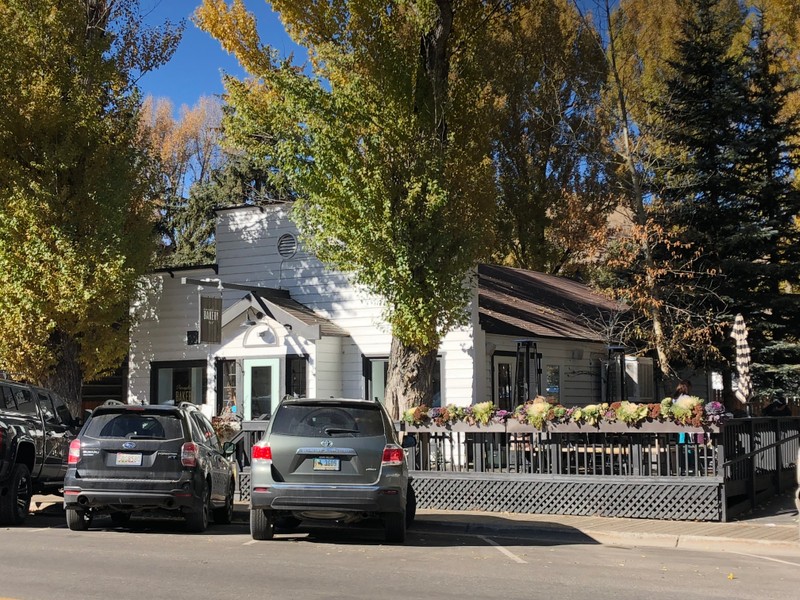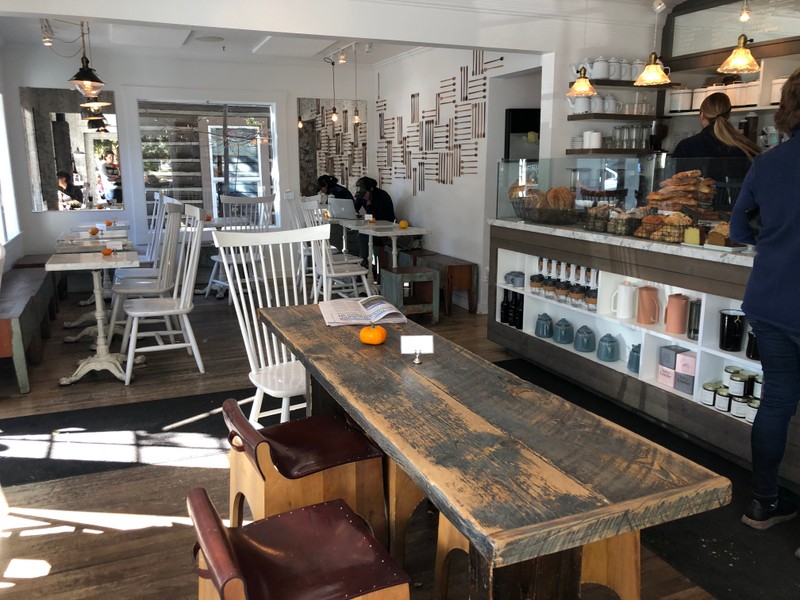Smith House
Introduction
Text-to-speech Audio
Originally built as a resident in 1941, the Smith House has seen a lot of change over its 82-year history. The evolution of the building closely mirrors that of the Town of Jackson. From a small rural and agricultural area in the 1940s to a bustling western town when the false-front façade was added in the 1980s. It was eventually moved in 1994 when its former location was chosen for the newly expanded Teton County municipal offices. Now preserved in perpetuity with a façade easement, the old mid-20th century building is at home in its current location, in an open green setting more closely associated with its early bungalow architecture.
Images
Persephone Exterior

Persephone Interior

Backstory and Context
Text-to-speech Audio
The Smith house was built in 1941 as a residence on Willow Street, and was later moved to its current location on E Broadway in 1994. John and Hazel Smith lived here only a short period, in 1945 they sold the house to mother and son Eliza and Fred Toppan. The Smiths relocated to Pocatello, Idaho and the Toppans owned and ran a ranch in Wilson. It was somewhat common for ranchers and homesteaders who lived a day’s ride outside Jackson to have some kind of housing in town. It was easier having a place to stay overnight after gathering supplies, before making the journey back home the next day. Sometimes the homes in town were so children could go to school, and have an easier commute in town. School was often held in the winters, when there were less ranch chores. Some valley schoolchildren had a long horse ride to and from school, sometimes in blowing wind and drifting snow. Some families also preferred to winter in town, and close up their ranches for the winter. However, by the 1940s this practice had mostly ceased. It’s possible the Toppans wanted some addition income from a rental property, and the ability to stay in town when needed. They continued to own the home for another decade, and eventually sold it to Lee Johnson Jr. in 1956.
Lee Johnson Jr. married Hilda Feuz in 1946, and worked for the state highway department. They lived in the house until 1980. The house was eventually sold to Floyd King, a local developer and attorney. He converted the house for use as his law office, and likely constructed the false-front façade at this time. This likely helped to give the former residence a businesslike appearance, and to attract more clients. The former residence had been a classic vernacular bungalow, and a popular house style in Jackson in the 1930s and 1940s. A handful of these houses still remain, and they all share nearly identical features of a street-facing gable roof, and enclosed front entry porch, usually with an off-set gable, or centered gable with the main portion of the house.
Floyd King was well-involved in the local community, serving as the U.S. Magistrate to Grand Teton National Park, and the Town of Jackson’s and the School Board’s attorney. He was President of the Jackson Hole Chamber of Commerce and developed the Rafter J and Aspens subdivisions. In the early 1990s Teton County selected his law office as the new site for the County Offices, much to the dismay of the local community. Willow Street at the time was a small residential area, removed from the downtown business district. The houses down the street also resembled the small bungalow style of King’s office, and there was concern what a large multi-story office building would do to the character. The County was undeterred, and the current County Offices are located in this location on Willow Street. The Town of Jackson Offices are located nearby, and this area is mixed-use today.
Rather than tear down King’s old office building, it was decided to try to move it. Abi Garaman was a local interested in historic preservation, and already owned the old Van Vleck house (today Café Genevieve). In 1989 he had completed a dedicated restoration of the Van Vleck house after a devastating fire gutted the interior. In the renovation, he moved the house sightly south and west onto a new foundation with the intention of moving another old cabin to the site in the future. In 1994, he found the old Smith House/King Law Office to be the perfect fit for the property and moved the building the few blocks.
In 1994 a retail store was opened in the space, and a series of businesses followed until Persephone Bakery opened in the space in 2013. The large outdoor seating area was added in 2013 when Persephone moved in. In 2019, the entire block with Café Genevieve next-door was put up for sale and the community feared it would lose some of the last open green space near the central business core. The block had retained an open look and feel, with the few buildings spaced out, and resembling the old rural residential feel of the area as it had been when the Van Vleck house was first built. A community effort was launched to purchase the block and preserve the buildings and green space. The campaign was successful, and a private donor purchased the block. Conservation easements were placed on the land to preserve the open space. The buildings were preserved with façade easements with the Teton Trust for Historic Places, to preserve the exterior look and feel of the buildings.
Though the Smith House was never part of this residential block, the new location is more fitting for the residence-turned-business. It more closely resembles the setting it once had, in an area that has become more commercial. Despite the changes to the exterior, it is nonetheless able to convey the character of Jackson’s historical evolution from the early- to-mid 20th century.
Sources
Engle, Betsy. "The Smith House," Form prepared for the Teton County Historic Preservation Board, 2018.
Teton County Historic Preservation Board
